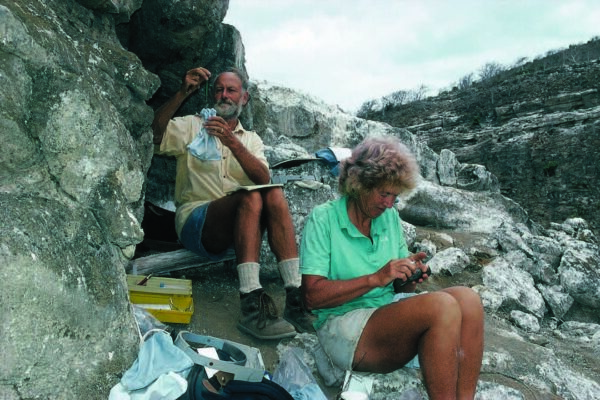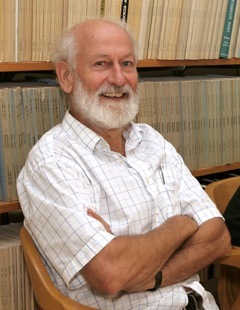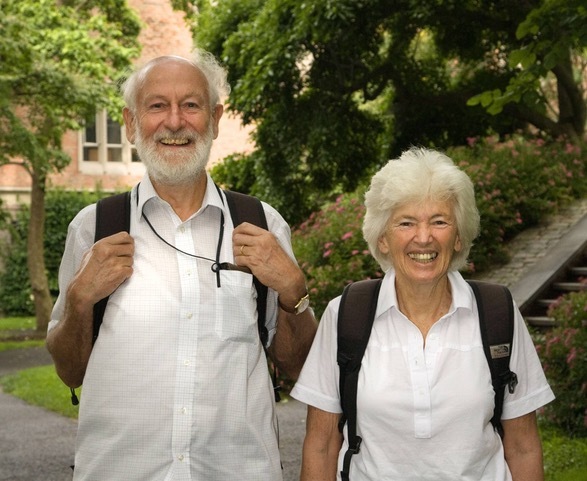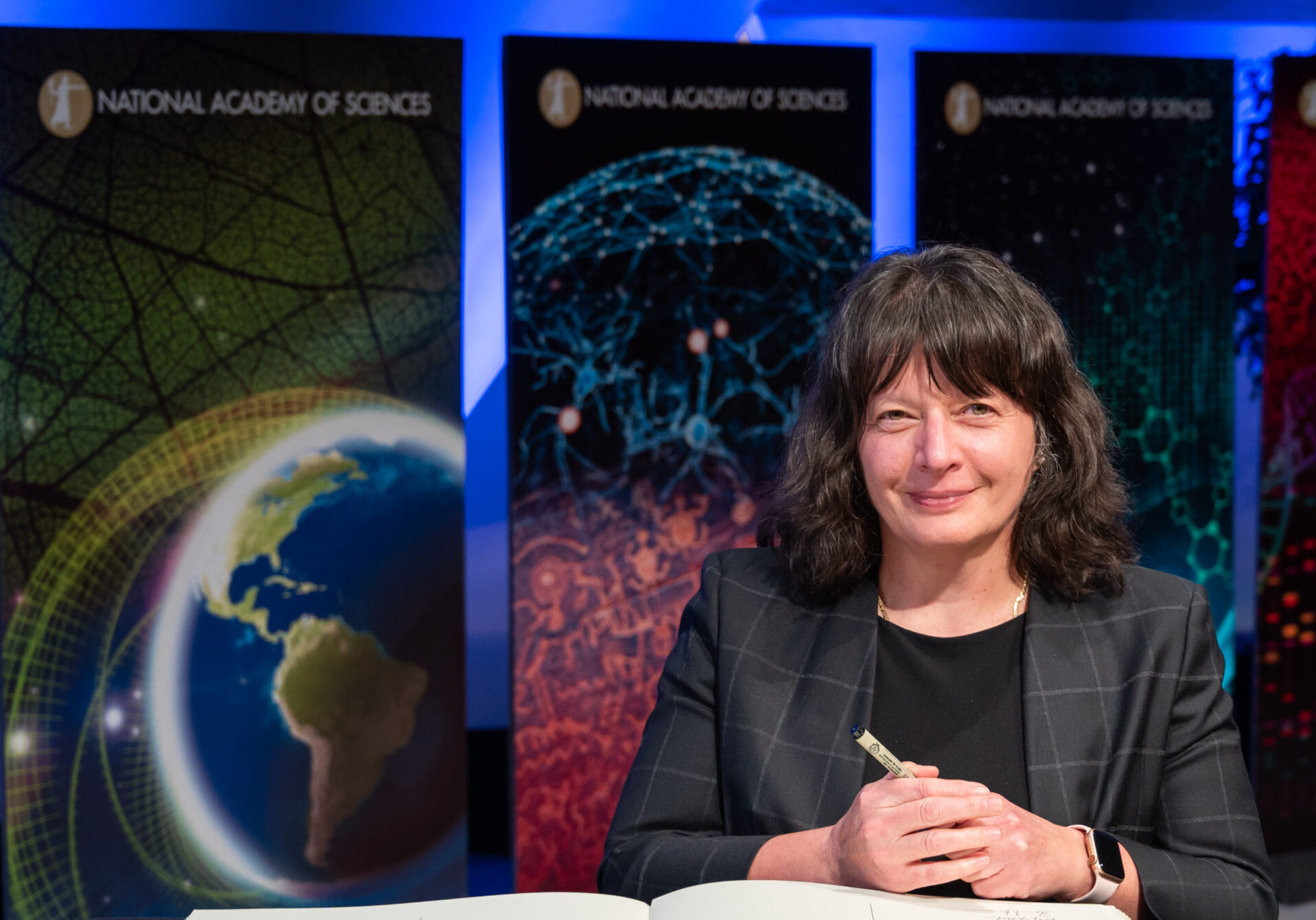On November 24, 1859, Charles Darwin published On the Origin of Species and transformed our understanding of life on Earth by introducing the scientific theory that populations evolve over the course of generations through a process of natural selection. Few studies have illustrated Darwin’s principles more vividly than the decades-long work of Peter and Rosemary Grant in the Galápagos. Through painstaking observation of finch populations on Daphne Major, the Grants have documented evolution unfolding in real time, revealing not only how natural selection shapes traits like beak size and shape, but also offering rare glimpses into the earliest stages of speciation. In this Q&A, they reflect on the surprises, insights, and enduring mysteries that have emerged from their groundbreaking research.
Your decades of work in the Galápagos have provided one of the clearest modern demonstrations of Darwinian evolution in action. When you first began your field research on Daphne Major, did you imagine it would reshape how scientists and the public understand natural selection?
We would like to say yes and be praised for exceptional prescience, but the answer is no, the full impact of our research only became apparent later. We could not have anticipated the first occurrence of natural selection in the fifth year of study, nor how strong natural selection could be in an entirely natural setting and in the absence of human influence.

Darwin could only infer change from specimens and notes, but you observed evolution unfold across generations in real time. What has studying living populations taught us about evolution that Darwin himself could not have known?
The simple answer is that evolution can happen remarkably rapidly, before our eyes as it were, not just in microbial organisms like viruses and bacteria, not just in hospitals and agricultural systems, but in long-lived animals like birds. It happens when the environment is subject to an intense perturbation such as a hurricane, heat wave, or drought, or the arrival of a new predator or pathogen, or when a species enters a new environment and meets new ecological challenges. Interestingly, Darwin may have witnessed natural selection without knowing it. He estimated that as many as four-fifths of the birds on his property died during the exceptionally cold winter of 1854-55. His gardener picked up dead birds. What a pity Darwin did not ask him to catch some of the survivors and bring them to him to measure!
Much of the public still thinks of evolution as something that happens across vast geological time. What is one example from your research that best illustrates how quickly evolutionary change can occur?
Evolution by natural selection occurred when a severe drought in 1977 caused huge mortality of Medium Ground Finches on Daphne Major Island. Although all birds suffered, large birds, especially those with particularly large beaks capable of cracking open large and hard seeds, survived better than small birds. This was a very strong episode of natural selection, and it led to a predictable evolutionary change in the next generation in 1978 because beak size is a highly heritable trait, as shown by measurements of parents and their fully-grown offspring. We witnessed a reversal in the direction of selection in 2004 under almost identical conditions but this time it followed the establishment of a breeding population of Large Ground Finches. Large members of the Medium Ground Finch population were at a selective disadvantage in the drought as they were outcompeted by Large Ground Finches for the dwindling supply of large and hard seeds. Genetic haplotypes associated with beak size and shape variation confirmed the evolutionary change in the next generation in 2005. Thus, in both these cases natural selection in one year caused evolution in the next.

In On the Origin of Species, Darwin proposed a mechanism for evolution—natural selection—but was less able to explain how new species are formed. What insights have you gained about the origin of species from your studies?
Speciation, the evolution of a new species that does not breed with its progenitor or relatives, is generally considered too slow to be observed from start to finish. But stages on the way are amenable to study. For example, our research has demonstrated one component, evolutionary divergence of related populations caused by natural selection. It has also shown that in the early stages of speciation, diverging populations that come together in the same area compete for food and diverge further. Under other conditions they are prone to interbreed, albeit rarely, and exchange genes bidirectionally, though not necessarily equally. So, a dynamic tension may exist between these opposing tendencies of divergence and convergence, or fission and fusion. The exchange increases genetic variation in the receiving populations and thereby facilitates subsequent evolution by natural selection in a new direction. In this way natural selection and hybridization can interact synergistically. We were fortunate to witness an extreme example of genetic mixing and the formation of a hybrid lineage when an immigrant species on Daphne bred with a resident species whose descendants formed an independent breeding population for at least four generations up to the end of our fieldwork. We refer to it as the Big Bird lineage, a species in the making. The lineage may be short-lived, too short perhaps to deserve being called a new species despite behaving as one, nevertheless it shows in principle one way in which two species can produce a third. Botanists are familiar with this process, zoologists less so.
You have worked side by side as scientific partners for decades. How has collaboration—both with one another and across generations of students—shaped the direction and impact of your research?
Collaboration between us has always been easy because we have different skills and early experiences. Rosemary was trained primarily as a geneticist and Peter was trained as an ecologist. The combination of skills helped us create an intellectually broad research program centered on trying to explain how biodiversity is generated. The same principle of complementary skills and expertise applies to our collaborations with other scientists, notably with Cliff Tabin at Harvard University and Leif Andersson at Uppsala University. They took us on a deep dive into the genomes of finches. The first discovered the genetic basis of beak development and its variation among species, and the second demonstrated the role of transcription factor variation in evolutionary change in body size and beak morphology. These two collaborations are a showcase of the profound benefits that can be achieved by combining long-term field studies with laboratory investigations of genomes.
 As we mark the anniversary of On the Origin of Species, what do you see as the most exciting unanswered question in evolutionary biology today that you hope future researchers will explore?
As we mark the anniversary of On the Origin of Species, what do you see as the most exciting unanswered question in evolutionary biology today that you hope future researchers will explore?
Peter: Well, there are huge questions today about evolution in humans, in deep sea organisms, in the microbial world, and about the origin of life itself. My choice of most exciting question is on a different level: why is there so much variation in the number of chromosomes in diploid organism, and how did that variation evolve? For example, why does one species of butterfly have 229 pairs of chromosomes and close relatives have only one tenth that number? If Drosophila melanogaster can make do with only 4 pairs, why do we humans have 23 pairs and Darwin’s finches have 38 pairs?
Rosemary: There are many exciting unanswered questions including how much can we learn from environmental DNA about past environments in which organisms evolved? Choosing just one is not easy! My choice is the evolution of vocal communication in birds and humans. Erich Jarvis and others have highlighted the similarity of human speech centers and bird song centers in their respective brains. About fifty percent of all birds learn their songs—the so-called songbirds as well as hummingbirds and parrots— whereas vocalizations of ducks, geese, and many others are innate. Some birds including Darwin’s finches learn a single song during a short sensitive period early in life and retain it unmodified thereafter whereas others learn and extemporize throughout life. We know very little about the genetic underpinning of these differences in type and length of song learning, and why only certain songs can be learned. For example, Darwin’s finches learn finch songs during their early sensitive period but not the yellow warbler songs they also hear. Research into bird vocalization holds promise of a deeper understanding into human speech since birds and humans share similar genes and genetic and neurological pathways.


